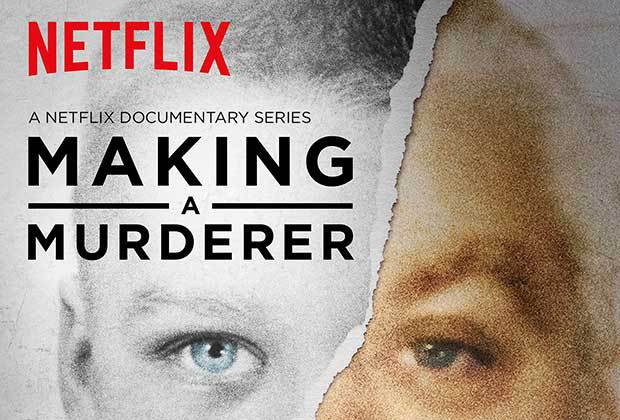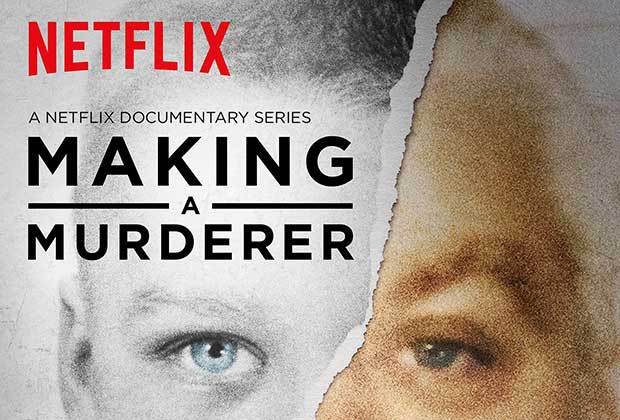Netflix released the trailer for their new docu-series Making A Murderer today, which will follow and reexamine the case against Steven Avery, who was found guilty of sexual assault. He then spent 18 years in prison before forensics proved his innocence. After his release, he was arrested for murder two years later in the midst of a civil case against local law corruption, and sentenced to life in prison.
The cover, a split portrait of Avery’s childhood photo and a mugshot, promises a psychological portrait of a murderer, but the trailer and the dual meaning of the title suggests a deeper truth, one of evidence tampering and police misconduct. Before the series even begins an idea is planted: was Steven Avery framed and “made” a murderer by the same people meant to protect us?
The mystery and criminal fiction genre is nothing new, but there’s been a surge in investigations of stories like Avery’s. News stories about the new Netflix series naturally put it in the same genre as HBO’s The Jinx and NPR’s Serial, which sought to shine light on real world cases where things were, to say the least, not quite right. The popularity of these series, I think, are indicative of a larger growing skepticism towards the legal system as the enforcers of truth and justice.
I’m taking a course right now that uses Serial as a text, and I think it’s really telling that it became popular when it did. Serial came out and became a phenomenon in late 2014, the same year as the shooting of Michael Brown, the strangulation of Eric Garner, and the first national Black Lives Matter protest in the United States. Alongside the movement are activists who used videos and pictures on social media to show the discrepancy between what was said and what happened. Investigative journalist Sarah Koenig follows the story of Adnan Syed, and reevaluates whether the courts were right to put a 17-year-old boy in prison with a life sentence. It also raises pertinent questions of the prison industrial complex and the disproportionate incarceration of men of color. Many activists knew that law enforcement wouldn’t only ignore their existence, but actively attack it. They became, in a sense, vigilante heroes by sharing these narratives of marginalized individuals that were contrary to what police/news sources were saying. (I would even place Daredevil, the lie-detecting lawyer who works both within and outside the law as part of this reaction.) Serial‘s second season is even more ambitious in scope, centering around Sgt. Bowe Bergdahl’s experiences in Afghanistan, the U.S. military, and Guantanamo Bay.
The Jinx came out the following year in 2015, painting of portrait of beady-eyed Robert Durst. Durst, whose wealth and social status as son of Seymour Durst, protected him from many repercussions was a real life super-villain. The entire premise of re-investigation in these series speak to an understanding that the legal system doesn’t only fail certain individuals, but can also function as a vehicle for systems of social hierarchy. These stories are resonant and no doubt entertaining, but what do they actually accomplish? The Jinx ends with a shocking revelation, and Durst was arrested for murder the day before the show’s finale, while Serial lead to a reopening of the Adnan Syed case, despite never finding a concrete “answer. ” Making A Murderer‘s final promise of “the truth always comes out” also suggests a satisfying conclusion.
But are these narratives as “real” as we’d like to think? Because I watch a lot of Law and Order-esque shows, I have engrained in my mind a certain format for these stories: incident, investigation, forensics, conclusion, Dick Wolf’s name. However, truth becomes more elusive in these true crime shows, which is why they become so controversial. There’s lot more responsibility when representing real life people, many of whom suffered through real trauma. Serial, for instance, resulted in a huge number of related podcasts. Rabia Chaudry, the one to contact Koenig about Adnan’s case in the first place, notably formed her own podcast Undisclosed: The State vs. Adnan Syed, illustrating some discontent with Sarah Koenig’s narrative.
That’s not to discount the importance of these stories though. The growing distrust and skepticism that police misconduct and a convoluted legal system have created for themselves is validated in these narratives that point out the gaping holes and closet skeletons.
The Making A Murderer trailer includes the line “in this criminal justice system, good luck” as if to say “we’re going to show you how the legal system is busted, and then do the work that they should’ve.”
Making A Murderer comes out December 18th.
(via Deadline)
—Please make note of The Mary Sue’s general comment policy.—
Do you follow The Mary Sue on Twitter, Facebook, Tumblr, Pinterest, & Google +?










Published: Dec 11, 2015 02:41 pm